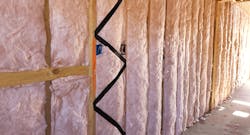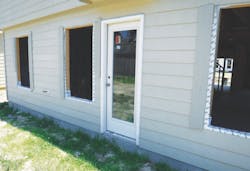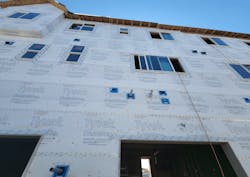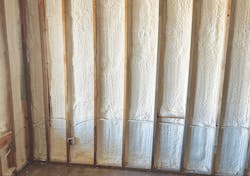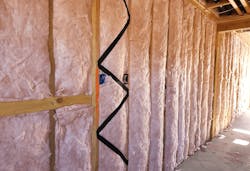5 Ways Home Builders Can Maintain Quality Despite Supply Chain Issues
The past two years of supply chain disruptions, compounded by labor shortages, have forced builders to embrace the Marine Corps mantra to improvise, adapt, and overcome. To this I would add “... while maintaining your quality standards.”
Home Builder Solutions to Beat Supply Chain Challenges
Throughout these still-challenging times, I’ve seen builders come up with creative and viable solutions to properly complete homes when the critical path becomes the path less followed. Here are some examples.
1. Window Flashing
To keep projects moving when the windows are nowhere in sight, leave the housewrap stretched over their rough openings, which will help to protect the interior until windows arrive.
To install siding while you wait, tack a minimum 4-inch-wide trim around window openings with the nailheads held just off the surface. Once the windows are on site, you can gently remove the trim, which should provide sufficient room to properly flash the windows (see photo, below).
2. Structural Elements
Structural sheathing can be interchanged with other more readily available options, but work with your architect or engineer to ensure compliance with the building’s requirements.
If changing from sheathing that requires a water resistive barrier (WRB), such as OSB or plywood, to those that do not, such as Thermo-Ply or Zip System panels, ensure everyone involved learns and applies the manufacturer’s installation details. On-site training offered by the manufacturer can help a lot.
It’s also important to understand how differences in vapor permeability among sheathing materials affect wall performance. Be aware of and stay close to the wall vapor profile that’s recommended for your climate.
RELATED
- Supply Chain Solutions: 3 Tactics for Home Builders
- Who Can Shorten the Supply Chain for Home Building?
- Supply Chain Relationships: What's Working and What's Not [Research]
3. Housewraps
Not all housewraps are created equal; they vary significantly in permeability ratings and in their ability to function as an air barrier.
Unperforated housewraps both shed bulk water more effectively than perforated ones and can also improve airtightness. Do your homework and be aware of your climate conditions (see photos, below).
4. Insulation
While wall cavity insulation products can be interchanged, they vary significantly in their thermal (R-value) ratings and impact on a wall’s vapor profile.
Fiberglass batts and loose-fill products can be used in any climate, but damp-sprayed cellulose isn’t recommended for hot/humid areas. Closed-cell spray foam insulation can be used in any climate and also provides an excellent air barrier (see photos, below).
5. Tile Backers
There are two primary types of wet-area tile backer: those that are surface draining (such as DensShield), and those recommended to be installed over a WRB or made to be waterproof on the surface (such as cementitious Durock). There’s also a class of waterproof membrane, such as Schluter-Kerdi, that provide a fully waterproof membrane over a variety of backers that are adequately secured to the framing to bear the weight of the tile.
The critical point is to avoid simply swapping out tile backer products without knowing what’s required to make them waterproof. My rule of thumb: If a shower can’t be used before the tile goes on, it isn’t ready for tile.
Before you try alternatives to these critical material specs, perform your due diligence on the differences in their performance and confer with your architect, engineer, and especially your trade partners. And if you do switch, make sure you inform or remind trades of your specific installation standards and keep a close eye on their work.
Graham Davis is a senior building performance specialist on the PERFORM Builder Solutions team at IBACOS.
